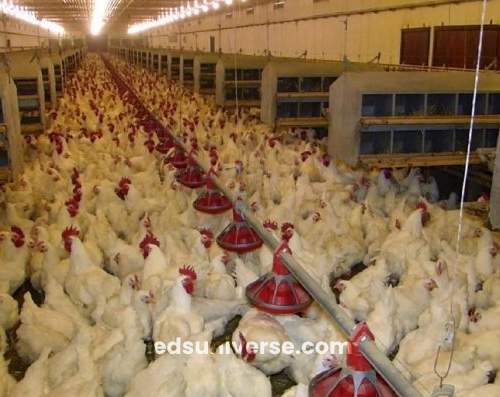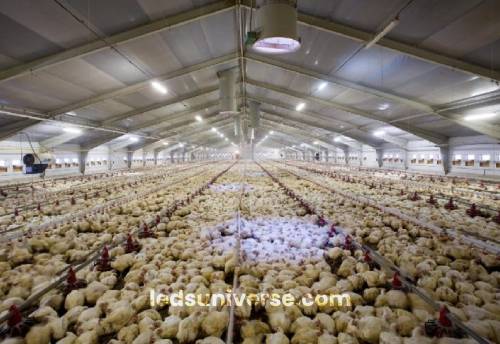Setting up the perfect lighting for your chicken coop can be a game-changer for your flock’s health and productivity. Think of it as creating a cozy, well-lit environment that your chickens will love. LED lights and barn lights are two top choices, each bringing something unique to the table.
With the right lighting system, you can ensure consistent egg production, provide warmth, and support the overall well-being of your chickens throughout the year. We will discuss various aspects of chicken coop lighting, including types of lighting, optimal lighting levels and duration, lighting placement and setup, and more.
Reach out for free lighting consultation
Table of Contents
ToggleSelecting the appropriate type of lighting for a chicken coop is crucial for meeting the specific needs of your poultry.
| Type of Lighting | Description | Benefits |
|---|---|---|
| LED Lighting | Highly efficient with a long lifespan, providing bright, clear illumination. Generates minimal heat. | Energy-efficient, safe for maintaining temperature, and tailored to chicken needs. |
| Barn Lights | Designed for high luminance and minimal glare, with red hues less perceived as daylight by chickens. | Enhances egg production, durable, withstands harsh weather conditions, suitable for both large and small facilities. |
| Solar-Powered Lighting | Eco-friendly lights that harness solar energy during the day to illuminate the coop at night. | Reduces energy costs, ideal for remote areas without electricity, and provides consistent illumination. |
LED lights are highly recommended due to their energy efficiency and long lifespan. They provide bright, clear illumination that can be tailored to the needs of your chickens. Additionally, LEDs generate minimal heat compared to other lighting options, making them a safe choice for maintaining a comfortable temperature inside the coop.

Another excellent choice for chicken coops is barn lights. Designed to offer high luminance while minimizing glare, barn lights are effective at providing the necessary illumination. Their red hues are less likely to be perceived as daylight by chickens, which helps in maintaining consistent egg production. Barn lights are also durable and can withstand harsh weather conditions, making them suitable for both large-scale and smaller poultry facilities.
For those looking for an eco-friendly and cost-effective option, solar-powered lights are a great choice. These lights harness energy from the sun during the day and use it to illuminate the coop at night. Solar-powered lights are especially useful in remote areas without easy access to electricity. They also help reduce energy costs and can be used in combination with other types of lighting to ensure consistent illumination.
Proper lighting levels and duration are essential components for maintaining consistent egg production and ensuring the overall health of chickens.
The light intensity within a chicken coop should closely mimic natural daylight to promote a natural and comfortable environment for the poultry. A commonly recommended light level is between 10 and 20 lux. This level is sufficient to provide clear visibility and support the chickens’ natural behaviors, such as feeding and movement, without causing undue stress or disrupting their sleep patterns. Achieving the right balance in light intensity is crucial for ensuring that chickens remain active and productive while avoiding potential health issues related to insufficient or excessive light.
This is particularly important during the winter months or in regions with limited natural daylight. To counteract the reduced natural light, additional artificial lighting should be used to extend the perceived length of the day. Ideally, the lights in the coop should be on for 14 to 16 hours each day. This extended lighting period helps stimulate the chickens’ pituitary glands, which play a key role in regulating egg production.
Providing a consistent period of darkness allows chickens to rest and recover. This balance of light and dark periods helps to maintain the birds’ circadian rhythms and overall well-being. By carefully managing both the intensity and duration of lighting, you can ensure optimal conditions for your chickens, leading to improved productivity and health.

The effective placement and setup of lighting in a chicken coop are fundamental to ensuring optimal illumination and comfort for your poultry. Proper lighting not only enhances the productivity of your chickens but also contributes to their overall well-being. Here’s an in-depth look at how to achieve the best lighting setup for your coop.
The goal is to avoid creating areas of harsh shadows or overly bright spots that can disrupt the chickens’ natural behaviors and cause stress.
To achieve uniform light distribution, position the lights at an appropriate height that allows for broad coverage across the entire coop. This helps to ensure that every area of the coop receives adequate light, supporting activities such as feeding, movement, and interaction among the chickens. Placing lights too close to the chickens can lead to discomfort and potential health issues, such as stress or overheating, particularly if the lights generate significant heat. Therefore, lights should be installed at a height and distance that provides a balanced illumination without causing direct glare or excessive brightness.
Additionally, consider the layout of the coop when determining light placement. Areas where chickens congregate, such as feeding stations or nesting boxes, should be well-lit to promote ease of use and reduce stress. Proper placement also involves avoiding obstructions that might block or interfere with the light, ensuring that every corner of the coop is adequately illuminated.
The setup of lighting in the chicken coop involves several considerations to ensure an effective and comfortable environment for your birds.
Account for the distance between the lights and the roosting areas. Lights should be positioned in a way that prevents disturbing the chickens during their rest periods. Ideally, the lighting setup should provide sufficient illumination while minimizing direct exposure to the roosting areas. This approach helps maintain a natural day-night cycle and prevents disruptions to the chickens’ sleep patterns.
Achieving comprehensive coverage across the coop. Ensure that the lighting setup addresses all areas of the coop, including nesting boxes, feeding areas, and general walking space. Using multiple light sources can be beneficial for achieving consistent illumination throughout the coop, especially in larger or more complex setups. This approach helps to avoid dark corners and ensures that the entire space is adequately lit.
Although LED lights generate less heat compared to traditional lighting options, monitoring the temperature within the coop remains important. The lighting system should contribute to a comfortable environment, especially during colder months when maintaining warmth is crucial. Regularly check the temperature to ensure that the lighting setup is not causing unwanted temperature fluctuations. Proper ventilation and insulation can also help maintain a stable and comfortable temperature within the coop.
Proper chicken coop lighting offers several benefits that contribute to the overall health and productivity of your poultry.
One advantage is increased egg production. By extending the length of daylight, you can prevent the seasonal reduction in egg laying that often occurs during winter. This helps maintain a steady production rate and supports the overall profitability of your poultry operation.
Another benefit is enhanced warmth within the coop. While LEDs do not generate as much heat as traditional lighting sources, they can still contribute to a slightly warmer ambient temperature. This is particularly useful in colder climates or during winter months when maintaining warmth is crucial for the health and productivity of your chickens.
Warm, gentle light can provide a sense of security and help regulate their body temperature. Additionally, the right lighting can support their transition from the incubator to the coop, ensuring they remain healthy and thrive in their new environment.
Several factors should be taken into account when choosing the best lighting system for your chicken coop.
Cost is an consideration. Evaluating the initial investment and long-term savings associated with different lighting options is essential. For instance, LED lights might have a higher upfront cost but offer significant savings on energy bills over time.
The location of your coop and the distance of the lighting from other structures should also be considered. Ensuring that the lighting setup meets practical needs and fits within your budget is crucial.
The orientation and layout of your coop will impact the effectiveness of the lighting setup. Achieving even coverage and avoiding issues with shadows or glare are key considerations. Efficiency and durability of the lighting systems are also important. Choosing options that are efficient and durable will help ensure reliable performance and minimal maintenance.
Selecting lighting solutions that are reliable and require minimal maintenance will help avoid frequent replacements and ensure consistent performance.
Proper chicken coop lighting maintain egg production, providing warmth, and support the overall well-being of your poultry. By selecting the right types of lighting, optimizing light levels and duration, and carefully planning the placement and setup, you can create an environment that promotes the health and productivity of your chickens. Whether managing a large-scale poultry facility or a small backyard coop, investing in quality lighting solutions will lead to improved performance and a more comfortable environment for your birds.